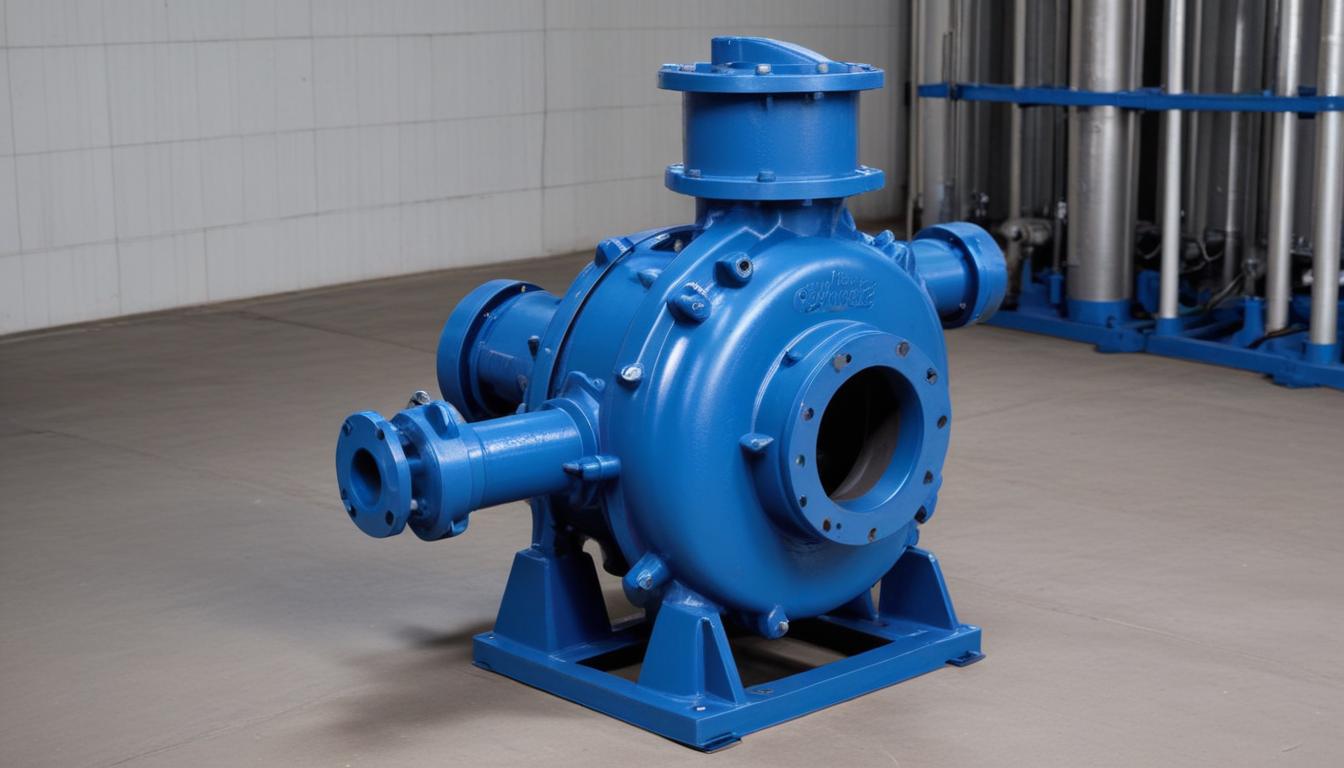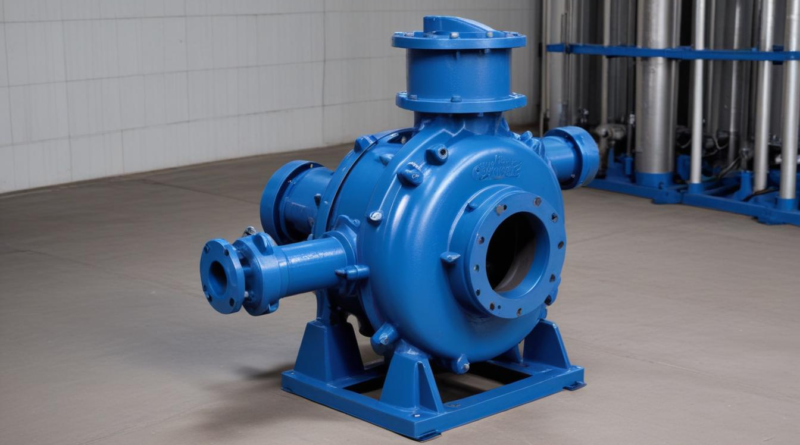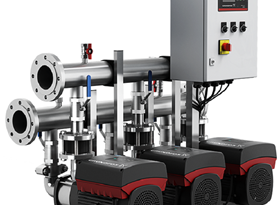how to choose a pump based on flow variability
Flow variability refers to the fluctuations in the rate at which fluid moves through a system over time. This variability is a critical factor in pump selection, as different pumps are engineered to handle varying flow conditions with varying degrees of efficiency and reliability. Understanding the extent and nature of flow variability helps ensure that the chosen pump can maintain optimal performance under changing operational demands.
Several factors contribute to flow variability, including:
- Operational Demand: Changes in system usage, such as varying production levels in industrial processes, can lead to inconsistent fluid movement.
- Supply Variations: In water supply systems, fluctuations in source availability or pressure can affect the flow rate.
- System Design: Elements like pipe layout, valves, and fittings can introduce variability through resistance and turbulence.
- External Conditions: Environmental factors such as temperature and pressure changes can influence fluid dynamics within the system.
Assessing flow variability involves analyzing historical flow data to identify patterns and peak demands. This analysis can be conducted through:
- Flow Measurement Instruments: Devices like flow meters and sensors provide real-time data on flow rates.
- Data Logging: Recording flow rates over extended periods helps in understanding trends and irregularities.
- Statistical Analysis: Evaluating flow data using statistical methods can quantify variability and predict future demands.
Understanding flow variability is essential for establishing the appropriate criteria for pump performance. Key considerations include:
- Capacity Range: The pump must handle both minimum and maximum flow rates without compromising performance.
- Adjustability: Features such as variable speed drives enhance a pump’s ability to respond to changing flow conditions.
- Efficiency: Maintaining high efficiency across a range of flow rates reduces operational costs.
- Reliability: The pump should consistently perform under variable conditions to ensure system stability.
By thoroughly understanding and analyzing flow variability, professionals can make informed decisions in pump selection that enhance system performance and longevity.
assessing system requirements
Assessing system requirements is a pivotal step in the pump selection process, especially when addressing flow variability. A comprehensive evaluation ensures that the selected pump aligns with the specific demands and constraints of the system, thereby optimizing performance and longevity. The following aspects should be meticulously analyzed:
- Flow Rate Specifications: Determine the minimum, maximum, and average flow rates required by the system. Understanding these parameters helps in selecting a pump that can efficiently handle fluctuations without compromising on performance.
- Head Requirements: Calculate the Total Dynamic Head (TDH), which encompasses the vertical lift, friction losses in pipes, and any additional pressure requirements. Accurate TDH calculation is essential for ensuring that the pump can deliver the necessary pressure across varying flow conditions.
- Fluid Properties: Analyze the characteristics of the fluid being pumped, including viscosity, temperature, corrosiveness, and the presence of solids or abrasives. These factors influence the choice of pump materials and the overall design to prevent wear and ensure compatibility.
- Power Supply Constraints: Assess the available power sources, including voltage, phase, and frequency. Ensuring that the pump’s electrical requirements match the existing power supply is crucial for seamless integration and efficient operation.
- Physical Space and Installation Constraints: Evaluate the spatial limitations and installation environment. Factors such as pump size, orientation, and accessibility for maintenance must be considered to facilitate proper installation and future servicing.
- System Integration: Consider how the pump will interface with existing system components like valves, sensors, and control systems. Compatibility with automation and monitoring systems can enhance responsiveness to flow variability and improve overall system management.
- Environmental Factors: Take into account external conditions such as ambient temperature, humidity, and potential exposure to hazardous environments. These factors may dictate the need for specialized pump enclosures or cooling systems.
To further illustrate how these requirements impact pump selection, consider the following table outlining typical system parameters and their influence on the choice of pump:
| System Parameter | Impact on Pump Selection |
|---|---|
| Flow Rate | Determines the pump’s capacity and ability to handle variable flow conditions efficiently. |
| Total Dynamic Head (TDH) | Influences the pump’s head rating, ensuring it can overcome system resistance at different flow rates. |
| Fluid Properties | Affects material selection and pump type to prevent corrosion, wear, and ensure compatibility. |
| Power Supply | Ensures the pump operates within the available electrical infrastructure, optimizing energy usage. |
| Physical Space | Determines the pump’s dimensions and installation configuration, facilitating proper fit and accessibility. |
| System Integration | Ensures seamless communication with control systems, enhancing responsiveness to flow variability. |
Additionally, identifying peak demand periods and average usage patterns aids in selecting a pump with appropriate criteria for adaptability and efficiency. Implementing variable speed drives (VSDs) can significantly enhance a pump’s ability to adjust to changing flow rates, thereby maintaining optimal performance and reducing energy consumption.
- Peak Flow Handling: The pump must sustain higher flow rates during peak demand without excessive wear or energy usage.
- Energy Efficiency: Selecting pumps that operate efficiently across a range of flow conditions can lead to substantial energy savings.
- Scalability: The ability to scale operations up or down based on varying flow requirements ensures long-term system flexibility.
By meticulously assessing these system requirements, stakeholders can ensure that the pump selected not only meets current operational needs but is also adaptable to future changes in flow variability. This proactive approach minimizes downtime, reduces maintenance costs, and enhances overall system reliability.
types of pumps for variable flows
Selecting the appropriate pump type is essential to effectively manage flow variability within a system. Various pump technologies offer different advantages and are suited to handle fluctuating flow conditions with varying degrees of efficiency and reliability. Understanding the characteristics of each pump type aids in the pump selection process, ensuring optimal performance and longevity.
Centrifugal Pumps are among the most commonly used pumps for systems with variable flows. They operate by converting rotational energy into kinetic energy, which then translates into flow. Their advantages include:
– Wide Range of Flow Rates: Capable of handling both high and low flow rates with relative ease.
– Simple Design: Easy to maintain and cost-effective for many applications.
– Scalability: Suitable for both small-scale and large-scale systems.
Positive Displacement Pumps are ideal for applications requiring precise flow control, especially under varying conditions. Key features include:
– Consistent Flow Delivery: Maintains a steady flow rate regardless of pressure changes.
– High Efficiency at Low Flow Rates: Performs efficiently even when flow demand fluctuates.
– Versatility: Suitable for a wide range of fluids, including those with high viscosity.
Variable Speed Pumps incorporate variable speed drives (VSDs) to adjust the pump’s operational speed according to flow demand. Benefits include:
– Energy Efficiency: Reduces energy consumption by matching pump speed to actual flow requirements.
– Enhanced Control: Provides better regulation of flow rates, accommodating flow variability seamlessly.
– Reduced Wear and Tear: Minimizes mechanical stress by avoiding constant operation at peak speeds.
Peristaltic Pumps utilize a rotating mechanism to move fluid through a flexible tube, offering specific advantages:
– Gentle Handling of Fluids: Ideal for sensitive or shear-sensitive fluids, as they minimize agitation.
– Self-Priming: Capable of handling fluids with varying viscosities without the need for priming.
– Low Maintenance: Fewer moving parts reduce the likelihood of mechanical failures.
To facilitate a clearer comparison, the following table outlines the suitability of each pump type for varying flow conditions:
| Pump Type | Suitable for High Flow Variability | Energy Efficiency | Maintenance Requirements |
|---|---|---|---|
| Centrifugal | Yes | Moderate | Low |
| Positive Displacement | Moderate | High at Low Flows | Moderate |
| Variable Speed | Excellent | High | Variable |
| Peristaltic | Good | High for Specific Applications | Low |
When determining the most suitable pump type, consider the following criteria:
1. Flow Range Flexibility: The ability of the pump to handle a wide range of flow rates without significant performance loss.
2. Energy Consumption: Evaluating the pump’s efficiency across different operational speeds and flow conditions.
3. Durability and Reliability: Ensuring the pump can withstand the demands of variable flows without frequent maintenance.
4. Control and Automation Compatibility: The ease with which the pump can be integrated into automated control systems to respond to real-time flow changes.
5. Cost Considerations: Balancing initial investment with long-term operational and maintenance costs.
By carefully assessing these factors and understanding the distinct advantages of each pump type, stakeholders can make informed decisions that align with the specific criteria required to manage flow variability effectively.
evaluating pump performance criteria
 Evaluating pump performance criteria is essential to ensure that the selected pump meets the specific demands of a system experiencing flow variability. By thoroughly assessing various performance indicators, stakeholders can make informed decisions that enhance efficiency, reliability, and overall system effectiveness. The following criteria are pivotal in the pump selection process:
Evaluating pump performance criteria is essential to ensure that the selected pump meets the specific demands of a system experiencing flow variability. By thoroughly assessing various performance indicators, stakeholders can make informed decisions that enhance efficiency, reliability, and overall system effectiveness. The following criteria are pivotal in the pump selection process:
- Flow Rate Capacity: The pump must accommodate the required minimum and maximum flow rates of the system. It should maintain performance without significant drops or surges during fluctuating demands.
- Head Pressure: Evaluating the Total Dynamic Head (TDH) is crucial. The pump should generate sufficient pressure to overcome both the static and dynamic resistances within the system, ensuring consistent fluid movement.
- Efficiency: High efficiency across a range of operating conditions reduces energy consumption and operational costs. An efficient pump adjusts seamlessly to varying flow rates, maintaining optimal performance without excessive energy use.
- Reliability and Durability: The pump should demonstrate consistent performance over time, with minimal maintenance requirements. Durable construction materials and robust design contribute to long-term reliability, especially in systems with variable usage patterns.
- Adjustability and Control: Features such as variable speed drives (VSDs) allow for precise control over pump operations, enabling adjustments in response to real-time flow changes. This adaptability is vital for managing flow variability effectively.
- Response Time: The ability of the pump to quickly adapt to sudden changes in flow demand ensures system stability and prevents potential disruptions or damage caused by flow inconsistencies.
- Noise and Vibration Levels: Minimizing noise and vibrations is important for both operational efficiency and environmental considerations. Pumps with lower noise and vibration levels contribute to a more stable and less disruptive system.
- Compatibility with System Components: Ensuring that the pump interfaces seamlessly with existing valves, sensors, and control systems enhances overall system integration and responsiveness to flow changes.
To systematically compare and evaluate these performance criteria, the following table provides a structured overview:
| Performance Criterion | Importance | Considerations |
|---|---|---|
| Flow Rate Capacity | High | Must handle system’s minimum and maximum flow requirements without performance loss. |
| Total Dynamic Head (TDH) | High | Ensure the pump can generate the necessary pressure to overcome system resistance. |
| Efficiency | Medium to High | Higher efficiency reduces energy costs, especially important in variable flow systems. |
| Reliability and Durability | High | Reduces downtime and maintenance costs, ensuring long-term system stability. |
| Adjustability and Control | Medium to High | Enables the pump to adapt to changing flow conditions, enhancing system responsiveness. |
| Response Time | Medium | Quick adaptation to flow changes prevents disruptions and maintains system integrity. |
| Noise and Vibration Levels | Low to Medium | Important for environmental compliance and reducing operational disturbances. |
| Compatibility with System Components | Medium | Ensures seamless integration with existing infrastructure for optimal performance. |
In addition to these primary criteria, consider the following factors to ensure comprehensive pump performance evaluation:
- Installation Flexibility: The ease with which the pump can be installed and integrated into the existing system can affect both initial setup costs and future modifications.
- Maintenance Requirements: Pumps that require minimal and straightforward maintenance schedules can reduce long-term operational costs and downtime.
- Scalability: The ability to scale pump capacity up or down based on future system expansions or reductions in flow demand ensures longevity and adaptability.
- Environmental Impact: Energy-efficient pumps with low emissions contribute to sustainability goals and may qualify for regulatory incentives.
By meticulously evaluating these performance criteria, organizations can select pumps that not only meet current operational needs but also adapt to future changes in flow variability. This strategic approach enhances system efficiency, reduces operational costs, and ensures reliable performance under diverse flow conditions.
installation and maintenance considerations
Proper installation and maintenance are critical to ensuring that a pump operates efficiently and reliably, especially in systems characterized by flow variability. Adhering to best practices in installation not only facilitates optimal pump performance but also simplifies maintenance tasks, thereby extending the pump’s lifespan and reducing downtime. The following considerations are essential in the installation and maintenance phases:
- Site Selection and Preparation: Choose an installation site that provides adequate space for the pump, allowing for future expansions and easy access for maintenance. The site should be level and stable to prevent vibrations and misalignment, which can adversely affect pump performance.
- Alignment and Mounting: Ensure precise alignment of the pump and motor to minimize wear on bearings and seals. Proper mounting using vibration isolators can reduce the transmission of vibrations caused by variable flow conditions, enhancing the pump’s longevity.
- Piping and Connections: Design piping layouts that accommodate fluctuating flow rates without inducing excessive turbulence or pressure drops. Use appropriately sized pipes and secure connections to prevent leaks and ensure consistent flow, which is crucial for effective pump selection.
- Electrical Considerations: Verify that the power supply meets the pump’s specifications, including voltage, phase, and frequency. Incorporating protective devices such as circuit breakers and surge protectors can safeguard the pump against electrical fluctuations that may arise from variable flow demands.
- Environmental Protection: Protect the pump from environmental factors such as extreme temperatures, moisture, and corrosive elements. Utilizing weatherproof enclosures or installing the pump in controlled environments can prevent damage and maintain performance.
- Accessibility: Design the installation layout to provide easy access for routine inspections, maintenance, and repairs. Clear pathways and unobstructed areas around the pump facilitate timely maintenance, reducing the impact of flow variability on system operations.
- Monitoring and Control Systems: Integrate sensors and control systems that monitor pump performance in real-time. Automated systems can adjust pump operations based on flow conditions, enhancing responsiveness to flow variability and aiding in proactive maintenance.
Effective maintenance practices are equally important to sustain pump performance in environments with fluctuating flow rates. Key maintenance considerations include:
- Regular Inspections: Conduct routine inspections to identify signs of wear, corrosion, or leaks. Early detection of issues allows for timely interventions, preventing major failures that could disrupt system operations.
- Lubrication: Maintain proper lubrication of moving parts to reduce friction and wear. Using high-quality lubricants suitable for the pump type and operational conditions ensures smooth operation and extends component life.
- Component Replacement: Replace worn or damaged components promptly. Keeping spare parts on hand for critical elements such as seals, bearings, and impellers minimizes downtime and maintains system reliability.
- Performance Monitoring: Utilize performance data to assess the pump’s efficiency and detect deviations from normal operating conditions. Regularly reviewing metrics such as flow rate, pressure, and energy consumption helps in optimizing pump operations and addressing issues related to flow variability.
- Cleaning and Protection: Keep the pump and its components clean to prevent the buildup of debris and contaminants that can impair performance. Implementing protective measures against dust, moisture, and corrosive substances is essential for maintaining pump integrity.
- Documentation and Record-Keeping: Maintain detailed records of maintenance activities, inspections, and repairs. Comprehensive documentation aids in tracking the pump’s performance history, facilitating informed decisions in pump selection and future maintenance planning.
To further illustrate the interplay between installation and maintenance considerations, the following table outlines key factors and their impact on pump performance:
| Consideration | Impact on Pump Performance | Best Practices |
|---|---|---|
| Site Selection | Prevents alignment issues and operational disruptions | Select stable, accessible locations with adequate space |
| Alignment and Mounting | Reduces wear and vibration-related damage | Use precision alignment tools and vibration isolators |
| Piping Design | Ensures consistent flow and minimizes pressure drops | Design for optimal flow paths and secure connections |
| Electrical Setup | Protects against power-related disruptions | Implement appropriate electrical protections and verify power specifications |
| Environmental Protection | Prevents damage from external factors | Use weatherproof enclosures and control environmental exposure |
| Accessibility | Facilitates timely maintenance and reduces downtime | Ensure clear access for inspections and repairs |
| Monitoring Systems | Enhances responsiveness to flow changes and detects issues early | Integrate real-time sensors and automated controls |
By meticulously addressing both installation and maintenance considerations, organizations can ensure that their pump systems are well-equipped to handle flow variability. This comprehensive approach not only optimizes pump selection based on specific criteria but also ensures sustained performance, reliability, and efficiency over the pump’s operational lifespan.




